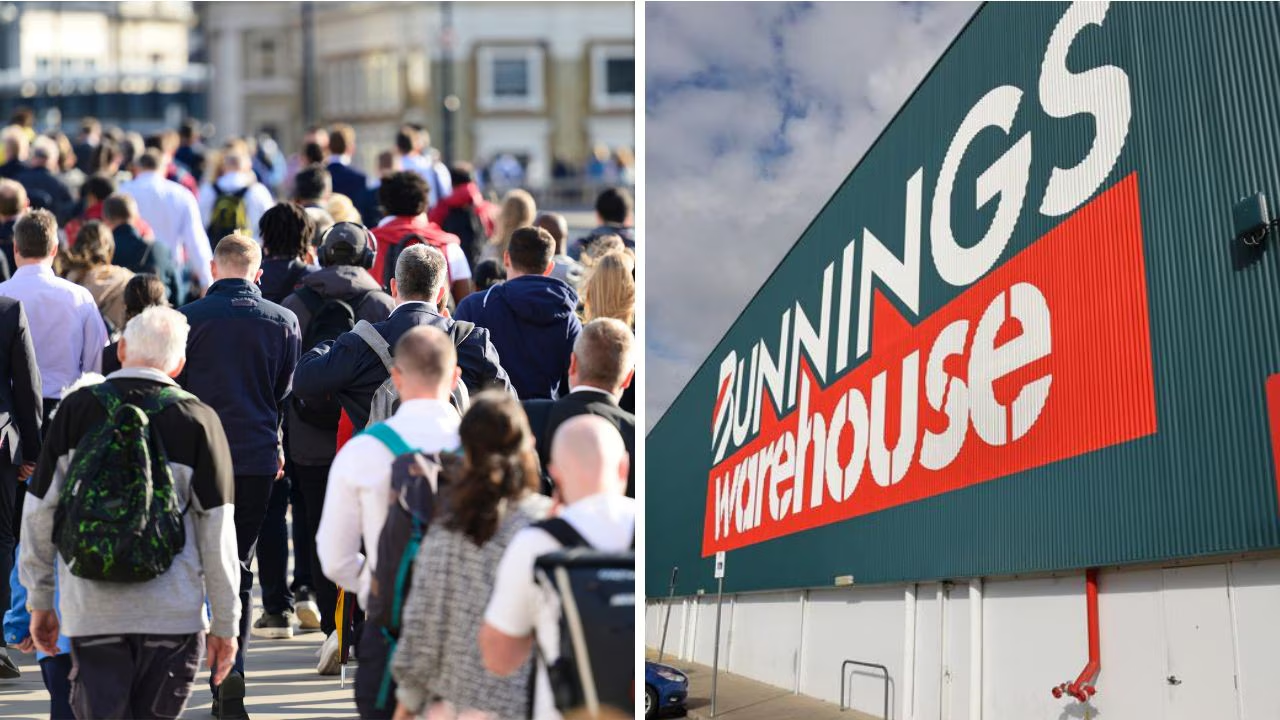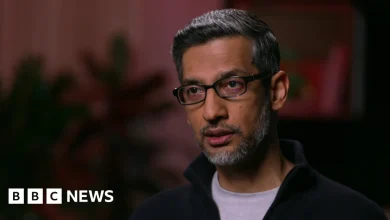New retirement trend changing Australia

Australians are working longer than ever before, that means the cross over between generations in the workforce is greater than it ever has been.
Of those aged 45 years and over who retired in 2024-25, the average retirement age was 63.8 years, according to the Australian Bureau of Statistics and compared to 20 years ago, Australians aged 60-69 are working longer.
Because of this trend, and Aussies living longer, for the first time in history, the Australian workforce now comprises five generations.
Given the explosion of diversity of age in Aussie workers, it is no surprise that employers have had to adapt – and quickly.
With strong representation of each generation among its 51,000 Aussie employees – from teenagers to those in their 70s – one of the country’s major employers, Bunnings, exemplifies this changing workforce.
MORE: The highest paying jobs in Australia without a degree
The company’s largest cohort is those in the 20-29 age group, who make up 30 per cent of all employees. Those under 20 account for 16 per cent of the workforce, while 14 per cent are aged between 50 and 59, and 13 per cent between 30 and 39. The 60-69 group makes up 12 per cent and 11 per cent are aged 40-49.
Those in the 70-plus age range make up 2 per cent of the company’s Australian workforce.
Kailee McAuley, 24, knows first hand what it is like to work with such a diverse age group, managing a team of 26 builders in her role as Builders Coordinator at Carrum Downs Bunnings in Melbourne.
Ms McAuley was 17 when she first started with the business and has worked in many different roles and stores within the company.
Within her current team, she manages employees from 15 to those over 70 years of age, which brings its own unique challenges.
“It’s never just leading my direct team at one point in time, we could have anywhere up to 60+ team members on the floor and you always have some sort of responsibility for those people,” she told news.com.au.
“I find definitely between the younger generation compared to the older generation, you have to have the ability to change your communication styles as well as just the general approach you take to team, as not everybody takes things the same way, so having a high emotional intelligence is a big part of that.”
Being a younger manager has also presented its own obstacles, with the 24-year-old saying that because of her age she is not always perceived to be in the position that she is.
But Ms McAuley is confident in her knowledge and skills, which has helped her overcome these types of situations.
And, she says being part of the younger working generation also has its benefits.
“Having a younger leader within the mix of the leadership team makes a big difference. I can provide a different approach or understanding for our younger team members. I can also be a big support system to them,” she said.
MORE: Australia’s highest-paying jobs revealed
Sonny Rosengren also manages a large team, supervising about 40 employees in his role as Team Leader at the Bunnings in Caringbah, Sydney.
After running two successful businesses, Mr Rosengren retired at the age of 60. However, after a few years of retirement, the now 67-year-old decided he wasn’t done with the workforce just yet, which is when he decided to apply for a job at Bunnings.
“I always thought Bunnings was a good fit for me, mainly because I’d spent most of my working life there in one form or another,” he said in a recent report shared by the Council of Ageing Australia.
He now works five days a week, up to nine hours each shift and has people on his team raging from university students to people in their 70s.
It is a “full-on job”, but that is why Mr Rosengren loves it, noting it has brought him a new feeling of “self-worth”.
“I have a great group of people that I work with, and we have a great team spirit. In my store, there are around 220 team members of all ages, all persuasions, all religions. It’s such a mix. It makes you feel young again,” he said.
Bunnings’ longest-serving team member, Bill Cooper, will have been with the company for 66 years in December.
Now 81, Mr Cooper started as a 15-year-old at the original Bunnings timber yard in Perth.
He is now at the Claremont store, working in the builder’s department.
When celebrating his 65th anniversary last year, he was asked if there was anything he would change about his career, to which Mr Cooper responded, “Nothing, I love everything, I love serving customers and that’s it. Simple.”
Asked what advice he would give to the younger team, he said, “For one rude customer, there are 100 beautiful ones. Let go of the one you can’t control and remember the good ones.”
In the past 12 months alone, five per cent of new Bunnings recruits have been over the age of 60, with these candidates bringing a wealth of experience to the team.
The over 60s cohort also has strong retention, with many continuing to work with the company well into their 70s and 80s in some capacity.
The 2025 Household, Income and Labour Dynamics in Australia (HILDA) Survey Report recently revealed that the proportion of retired women aged 60-64 dropped from 70 per cent in 2003 to just 41 per cent in 2023.
There was an even more dramatic change for men in the same age group, with retirement rates falling from 49 per cent to 27 per cent.
This trend of Aussies working later into their lives is set to continue, with the number of Australians aged 65 and older expected to double to 8.9 million by 2060, comprising 23 per cent of the population.
“As Australians are living longer, they are also working later into their lives. For the first time in history, the workforce now comprises five generations,” the Australian Public Service Commission’s State of the Service Report 2021-22 found.
The youngest in the Silent Generation, the generation above Baby Boomers, are now nearing 80 years of age, meaning there are, understandably, very few left in the workforce
However, the latest statistics show that this generation still comprised 7.5 per cent of the Australian workforce in 2021.
The eldest of the youngest current generation, Gen Alpha, are 14 years of age, meaning it won’t be long before they start to enter the workforce in droves.
Roxanne Calder, recruitment specialist and founder of EST10, believes a multi-generational team is one of the strongest assets a business can have.
Speaking to news.com.au, she pointed out it gives the advantage of range, experience, curiosity, risk appetite and restraint “all sitting in the same room”.
“Not to mention, mentoring isn’t just one way. Gen Z are in a great position to share knowledge regarding new ways of working, technology etc, helping to bridge the gap in sharing knowledge and forging relationships,” she said.
While having a vast age range among employees has many benefits, Ms Calder also pointed out this can result in different expectations around communication, pace, hierarchy and loyalty.
If these differences are not properly managed, it can create unnecessary friction or misunderstandings.
“But when a leader sets shared standards and encourages mutual curiosity, age diversity becomes a strategic advantage rather than a cultural headache,” she said.
When people speak about this subject, Ms Calder believes there is a tendency to simplify generations into personality types.
However, from what she has witnesses, most workplace tension is not about age, it is about “unmet expectations, unclear boundaries or a lack of honest feedback”.
“Once we remove stereotypes, we can see people of all ages who want the same things: meaningful work, respect, and leadership they can trust,” the recruitment specialist said.
“The businesses that thrive are the ones treating age diversity not as a problem to manage, but as an ecosystem to cultivate.”
Read related topics:Back AustraliaBunnings





